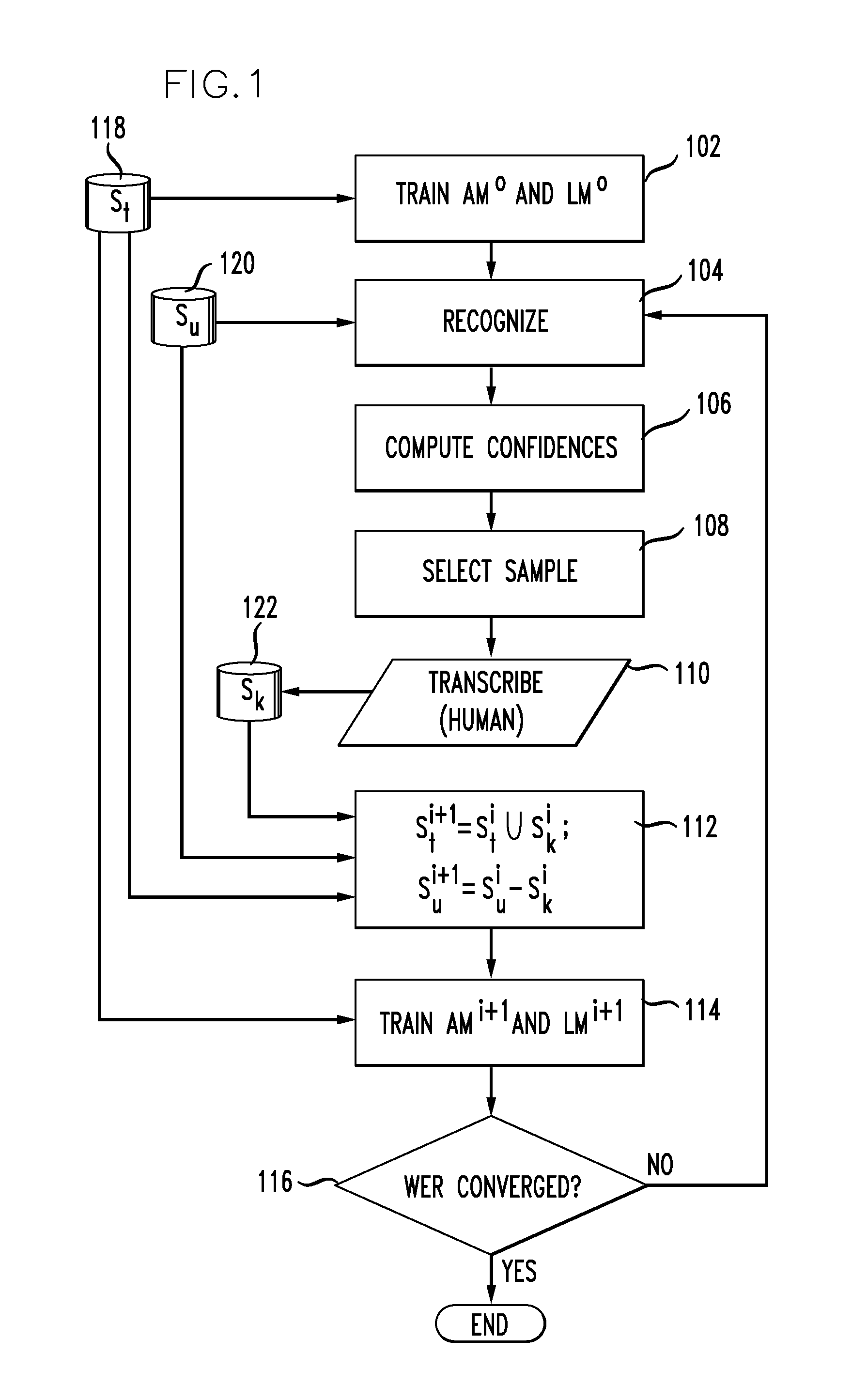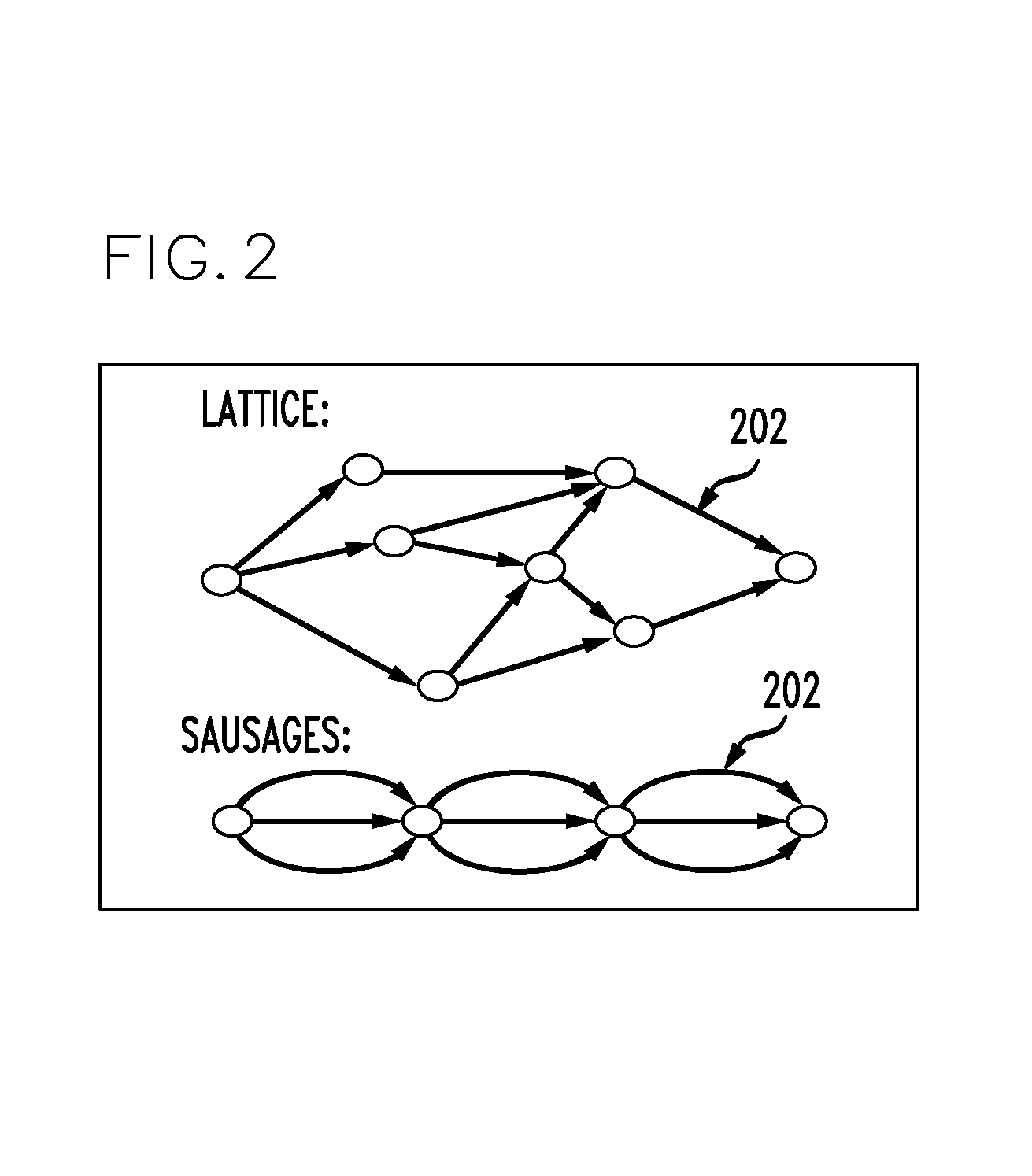Method of active learning for automatic speech recognition
a technology of automatic speech recognition and active learning, applied in the field of automatic speech recognition, can solve the problems of few if any of these works addressing active learning questions, labor-intensive and time-consuming transcription process, etc., and achieve the effect of reducing training effort and reducing transcription effor
- Summary
- Abstract
- Description
- Claims
- Application Information
AI Technical Summary
Benefits of technology
Problems solved by technology
Method used
Image
Examples
Embodiment Construction
[0016]Active learning aims at reducing the number of training examples to be labeled by inspecting the unlabeled examples and intelligently selecting the most informative ones with respect to a given cost function for a human to label. The goal of the learning algorithm is to select the examples for labeling which will have the largest improvement on the performance. Therefore, it is an object of the present disclosure to reduce the manual transcription effort for training in ASR. Using the method disclosed herein, the inventors have realized a reduction of the amount of transcribed words needed for a given word accuracy by 27%.
[0017]In one aspect of the disclosure, a method for reducing the transcription effort for training in ASR comprises selectively sampling a subset of data. The method is preferably practiced by a computer device as is known by those of skill in the art. The computer device is programmed to perform the steps of the method as described herein. Any programming la...
PUM
 Login to View More
Login to View More Abstract
Description
Claims
Application Information
 Login to View More
Login to View More - R&D
- Intellectual Property
- Life Sciences
- Materials
- Tech Scout
- Unparalleled Data Quality
- Higher Quality Content
- 60% Fewer Hallucinations
Browse by: Latest US Patents, China's latest patents, Technical Efficacy Thesaurus, Application Domain, Technology Topic, Popular Technical Reports.
© 2025 PatSnap. All rights reserved.Legal|Privacy policy|Modern Slavery Act Transparency Statement|Sitemap|About US| Contact US: help@patsnap.com



